Exhibition Tumbler Pigeons Guide (With Infographic)
The world of pigeons is a captivating one with hundreds of different species. And a collection of some of these magnificent species is called exhibition tumblers.
Why?
Because of their exceptional aerial acrobatics, particularly the ability to artfully tumble or roll over backward during flight. You’re probably aware of this tumbling behavior if you’ve ever seen a pigeon show.
This trait has been passed down for generations and was probably useful for evading predators of the wilderness back in the day.
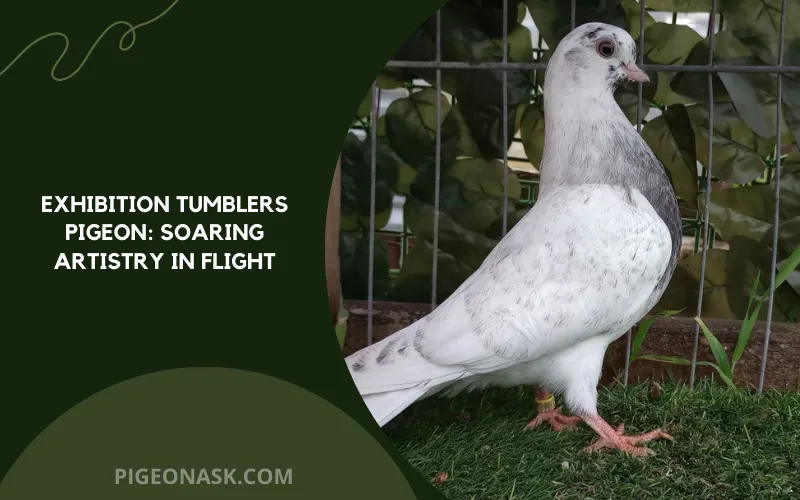
Over time these breeds were domesticated, and many were meticulously bred to perfect their tumbling flight patterns for shows and exhibitions. Want to learn more about these interesting creatures? Let’s dive in.
Overview of Exhibition Tumblers
One common mistake people make is thinking of exhibition tumblers as a specific breed. But actually, there are multiple breeds out there that exhibit wonderful aerial movements.
Collectively, they’re recognized as tumbler pigeons or exhibition tumbler pigeons.
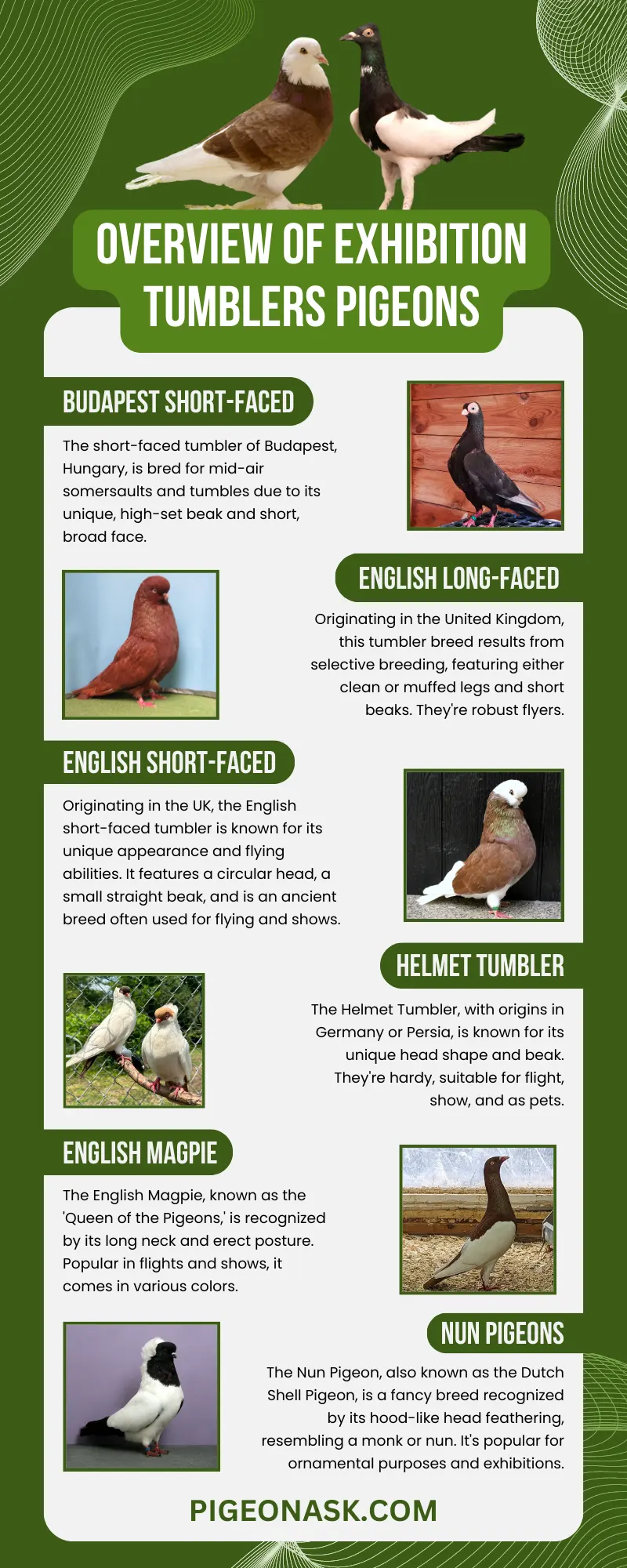
The term exhibition came from the breathtaking aerial performances and artistic flair-filled tumbling pigeon shows. The captivating events bring together dedicated breeders, trainers, and admirers of exhibition tumbler pigeons.
These breeds are all descendants of the rock dove, also known as the rock pigeon or common pigeon (Columba livia).
Let’s get to know some of the most popular tumbler pigeons from across the world.
Budapest Short-Faced Tumbler
One prime example of a tumbler breed developed over many years of selective breeding is the short-faced tumbler of Budapest, Hungary.
This breed can be easily distinguished by their short, broad face and a beak that is set unusually high on the forehead. The beak’s high placement is thought to enable better aerodynamics during flight.
Their impressive ability to perform lasting mid-air somersaults and tumbles is precisely what they were bred for.
English Long-Faced Tumbler
This domestic tumbler breed comes from the United Kingdom and is a result of selective breeding, like many others in this category. The breed comes either with clean, featherless legs or muffed legs.
Although the pigeons have elongated faces, their beaks are rather short. Due to this, they need the help of homing pigeons to help them grow when they’re young.
This is one strong, hardy breed that makes them exceptional flyers.
English Short-Faced Tumbler
Another popular breed of fancy pigeon from the UK is the English short-faced tumbler. This breed is known for its unique appearance and excellent flying abilities.
A short-faced tumbler has an upright and lively posture. This breed features a sizeable, wide, and circular head with a very small, delicate, and straight beak. Additionally, its wattles are tiny and possess a refined texture.
According to the book of John Moore, it is one of the oldest breeds of pigeons.
It comes with large and bold silver or pearl-colored eyes. Like the English long-faced tumblers, this one is used mainly for flying purposes as well. They often make excellent flyers and are sometimes used in shows too.
Helmet Tumbler
The Helmet Tumbler is a specific breed of domesticated pigeon widely known for the unique shape of its head and beak. It is argued that the origin of this breed goes back to Germany or way back to Persia.
Whichever it is, the modern-day varieties of the breed were refined only recently, in the late 20th century.
They have a skullcap-like crest on the back of their head, which gives them the “Helmet” appearance. Their beak is short and stout, and they come in various colors and patterns.
Helmet tumblers are quite a hardy breed. They’re suitable for both flight and show purposes. Also, their gorgeous look makes them perfect as pets and ornamental addition.
English Magpie Tumbler
With their long neck and erect posture, the English Magpie is an easily recognizable breed of England. Also named the ‘Queen of the Pigeons,’ this breed is highly prevalent in both England and America and widely used in both flights and shows.
These pigeons come in both medium and large sizes. The most popular ones are black, but the pigeons come in many other colors, like blue, silver, and yellow. They have long and flesh-colored beaks and long body-colored tails.
Nun Pigeons
The Nun Pigeon is a gorgeous-looking, fancy breed of pigeon, also known as the Dutch Shell Pigeon.
It’s easily recognizable due to its distinct hood-like feathering on its head, which gives it a monk-like or nun-like appearance, hence the name “Nun Pigeon.”
Although the modern varieties of this breed are the results of selective breeding, it was originally a flying tumbler from way before.
They’re relatively smaller in size and often come in either black or yellow. But only their front head, neck, and tail mainly hold color. Due to their look, they’re great for ornamental purposes, besides shows and exhibitions.
Looking for more articles about pigeon type:
Common Physical Appearance and Unique Features
Tumbler pigeons across the globe don’t have much similarity in terms of appearance and build. But they share many common features in plenty of other aspects. Let’s take a look at them.
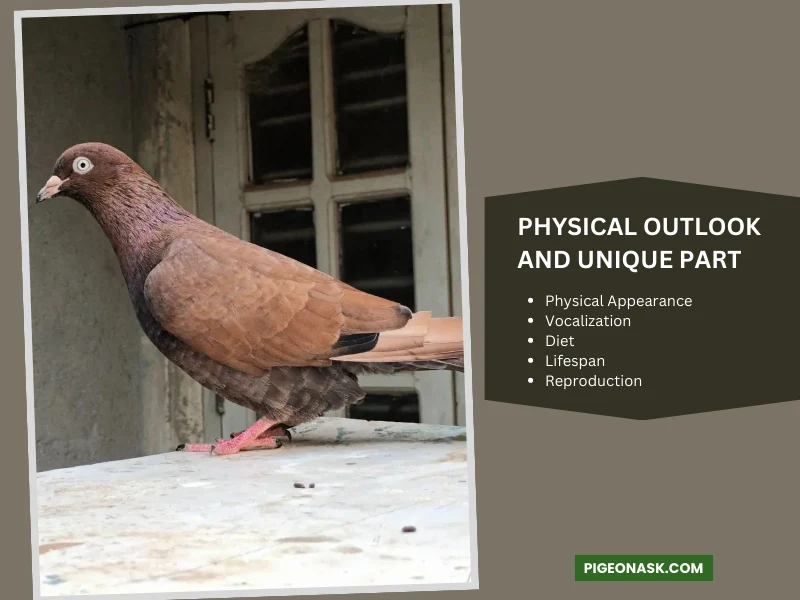
Physical Appearance
The modern varieties of different tumbler pigeons that exist today are mostly the results of extensive selective breeding. This made the physical features of these pigeons widely vary among each other.
Three different eye colors are most prominently noticed in different tumbler breeds, which are black, blue, and gray. Many of these pigeon breeds are crested and tufted.
Tumbler pigeons come in a wide range of colors and color patterns. These can include solid colors, patches, bars, and various combinations. The color patterns are specific to the breed and can be quite diverse.
Some of the most prominent feather colors of tumblers are black, gray, yellow, white, and azure. They also usually have strong and sturdy legs, which contribute to their ability to perform aerial acrobatics.
Vocalization
Tumbler pigeons are not particularly known for their vocalizations in the same way that some other pigeon breeds might be.
Unlike breeds like Homers or Fantails, which might have distinct cooing or vocalizing patterns, tumbler pigeons are more renowned for their acrobatic flying abilities rather than the sound they make.
Like most pigeons, tumbler breeds use cooing and whistling to communicate with each other. The nature and frequency of these sounds will vary from breed to breed.
Diet
The diet of tumbler pigeons plays a crucial role in their overall health, well-being, and performance.
That being said, commercially available pigeon feed mixes aren’t good enough to provide a balanced diet for tumbler pigeons. They require more protein content, fat, and other nutrients as they’re often engaged in exhausting activities.
Make sure the feed has a balanced mix of seeds, pellets, and grains. Sunflower, safflower, and canola seeds are all great sources of protein and fat.
The grain type you choose must have a high protein content as well. Oatmeal, millet, kamut (wheat berries), etc., are some of the protein-enriched grains.
Lifespan
The selective breeding process has its blessings as well as its curses. Sharpening one or more particular traits can sometimes cause major or minuscule changes in others.
Such a trait is the lifespan and survivability of these tumbling pigeons. It’s true that many tumbler pigeons have a standard lifespan of 7 to 10 years. But wide variation is often found in nature.
There are tumbler breeds that only live for 3 to 5 years, and there are some that can live as long as 20 years.
Reproduction
Breeding exhibition tumbler pigeons is a sophisticated process. A tumbler pigeon from a good bloodline is the first requirement in this process. That pigeon should be trained on a daily basis and should exhibit excellent flying and tumbling skills.
A tumbler pigeon needs to mate with one that isn’t a tumbler. Breeders arrange an appropriate environment for the two pigeons to make the breeding happen.
Remember, only the healthiest pair will give birth to get the best offspring.
Worldwide Geographic Distribution
Tumbler pigeons are a diverse group that has been developed and bred by pigeon enthusiasts around the world. Their geographic distribution spans various countries and regions where pigeon breeding and shows are popular.

A good number of tumbler breeds originated in Europe. Countries such as the United Kingdom, Germany, Austria, Hungary, etc., are the origin of many prominent tumbler breeds.
There are also various Asian breeds like the Shiraz tumblers (Iran) and Indian tumblers (India).
The Popularity and Cultural Significance of Exhibition Tumblers Pigeons
The history of pigeons and humans goes way back to the ancient period. And the cultural impact began to take place when humans discovered that pigeons could be trained and used as long-distance messengers.
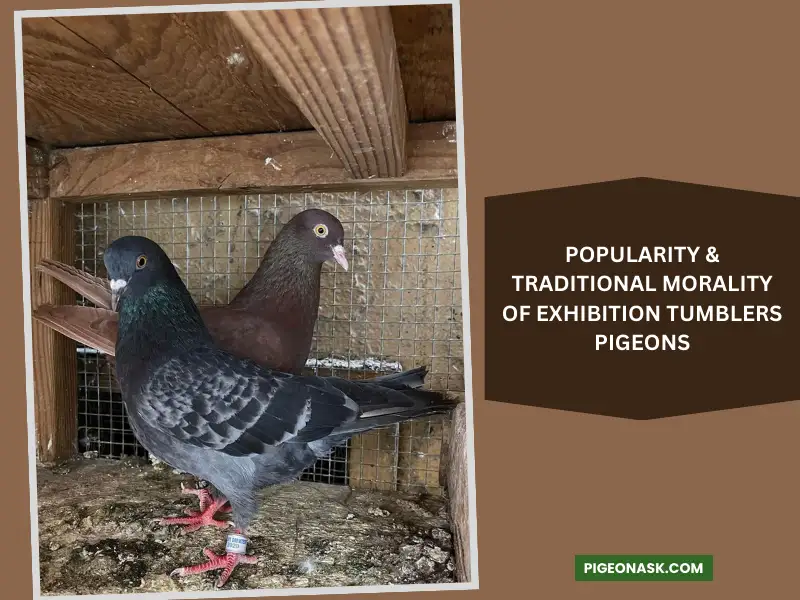
It’s assumed that the first pigeons were trained in ancient Persia, and later the Egyptians and Mesopotamians started to follow.
While these took place around 3000 to 2000 BC, only in the 1800s this peculiar tumbling characteristic was brought to public attention by Charles Darwin.
Exactly when some of the pigeons naturally started to show tumbling behavior won’t probably be known.
Initially, Asia was the first region to acknowledge and popularize the tumbling pigeon breeds. It is also assumed that the first tumbler pigeon originated somewhere in South Asia or the Middle East.
Until now, many Asian countries, like India, Bangladesh, China, Indonesia, etc., have many breeds of tumbler pigeons thriving. Even China currently has the largest number of pigeon breeders and fanciers around the world.
After showing up in Asian regions back in the day, the pigeons soon spread in Europe and other countries. Currently, with the help of selective breeding, tumbler breeds with incredible aerial skills are entertaining people all over the globe.
Breeding and Care Tips for Exhibition Tumblers Pigeon
If you’ve been reading the article this far, this question must’ve crossed your mind.
Can these pigeons be kept as indoor pets? Thankfully, yes. These breeds were domesticated for years, and they make good pets. But caring for them and breeding them can be a little complicated. They often have different requirements, like extensive diet needs and regular training time.
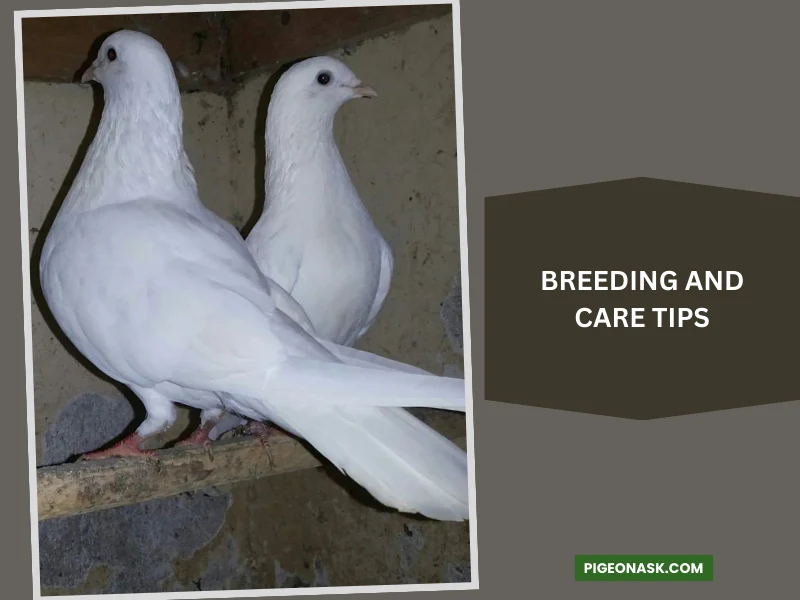
Let me give you some tips on how to breed and care for exhibition tumbler pigeons.
Manage Proper Housing
Tumbler pigeons require a spacey, well-built loft with easy access to the outside. They need to be able to flap their wings freely inside their loft. Also, ready access is mandatory so that they can easily go out for a flying session as they wish.
Mix Grit to the Feed
You should provide grit to your tumbler pigeons’ feed. Grit is a term for small, hard stones and minerals that pigeons and other birds ingest to easily break down the food in their gizzard.
Limestones, mineral salt, oyster shells, iron oxide, and zinc oxide all of these make excellent choices for pigeon grits.
Don’t Overfeed Them
Yes, tumbler pigeons need more protein and nutrients. But the amount that is healthy for them should be properly calculated.
Remember, overfeeding your tumbler pigeon will make them obese and lazy. In this state, they’ll soon lose interest in flying and performing.
Make Proper Breeding Arrangements
Breeding arrangements are crucial for getting healthy offspring. Keep the breeding pair in a box of around 6-7 sqft area and no more. They should be here for a couple of days with twice a day feeding cycle.
Before putting the pairs inside the box, make sure it’s clean and free of insects.
Feed Hemp Seed to Breeding Pigeons
Hemp seed is rich in healthy fats and oils, which makes it a dense source of energy.
During the breeding season, pigeons require more energy due to processes like courtship, mating, egg-laying, and chick-rearing. Hemp seed can provide the extra energy they need to support these activities.
Final Thoughts
Exhibition tumblers and their incredible aerial acrobatics are highly appreciated in many parts of the globe.
These creatures are living works of art that embody the harmonious interplay of beauty and motion, and pigeon breeders and fanciers across the world are still working on perfecting it.
Don’t hesitate to get a tumbler pigeon as a pet if you wish. Although it can be a bit toiling, the reward you’ll get is bound to leave an indelible mark of awe and admiration in your heart.
